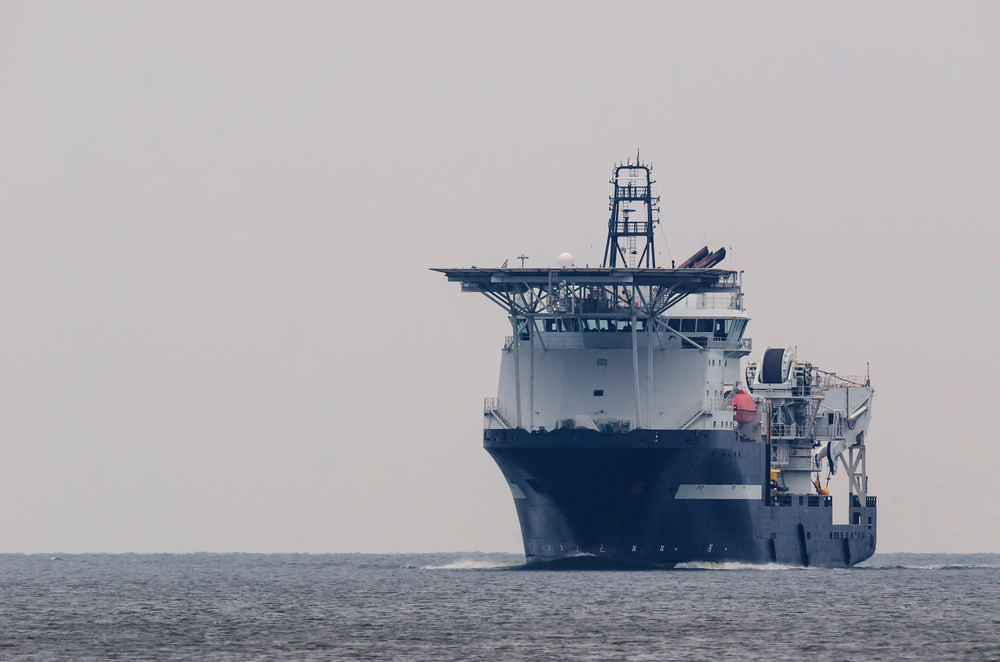Jean-Baptiste Rougeot
,
Head of Analysis
Author
, Published on
September 19, 2025
Sarah McLean
,
Lead Content Manager
Co-Author

Head of offshore energy analysis, Jean-Baptiste Rougeot, examines the state of the OSS market and what can be expected from near-term demand and technology advancement.

Offshore substations (OSS) are essential components in the growing offshore wind industry. These complex structures collect electricity from wind turbines via array cables, increase the voltage, and transmit it to the onshore grid via export cables. Two types are available: high-voltage alternative current (HVAC) and high-voltage direct current (HVDC).
But what observations have been made about each OSS technology to date, and what learnings can be carried forward into future offshore wind projects? Here, we delve into the history of HVDC and HVAC substations and explore the near-term future of what can be expected from this technology.
In 2001, the Horns Rev 1 offshore wind farm saw the installation of the very first offshore substation (HVAC type). In the 23 years since then, this technology has become the industry standard, with over 100 units installed worldwide outside of China.
The size of the OSS must match the power output of the wind farm it serves. So, as the market sees wind farm capacity grow faster than OSS capacity, it is not uncommon to see two OSS units installed in one project. In the coming years, it is anticipated that larger projects will need as many as four OSS.
Alongside this increase in wind farm size, array and export cables are also getting significantly larger. Array voltages have risen from 33 kV to 66 kV, while wind farms have continuously increased in size, now reaching more than 1 GW. As a result, the size of HVAC OSS topsides has also grown, seeing sizes increase by almost 400% between 2010 and 2023. The cable voltage increase (now at 525 kV) is mainly due to the swap from AC to DC.

What about HVDC, the younger cousin of the HVAC OSS units? This technology was introduced by Transmission System Operators (TSO) in Europe, led by German grid operator TenneT. By the end of 2023, 11 HVDC OSS have been commissioned in Europe, with 10 of those to be operated by TenneT. The first such unit operated by a non-TSO was installed at the UK’s Dogger Bank A wind farm in April 2023.
Outside of Europe, only China has used OSS with HVDC technologies, with the first being installed in 2021 and operated by China Three Gorges (CTG). The US market will soon increase the global tally, however, with one to be installed at Orsted’s 924 MW Sunrise wind farm.
HVDC units weigh much more than older HVAC units due to their higher power capacities (up to 2 GW) and converter systems. They already weigh over 10,000 tons and are expected to reach a massive 30,000 tons by 2030.
Offshore turbines produce Alternative Current (AC), so HVAC systems have been traditionally used in wind farm projects. However, AC transmission has its limitations, most specifically that AC cables have higher losses across longer distances—an issue as offshore wind projects move into deeper waters further from shore.
In contrast, a Direct Current (DC) transmission presents lower line losses per kilometer and no constraints to the charging current. However, HVDC transmission requires converting the AC current from the turbines into DC at the OSS. This means that a heavier and more complex HV system needs to be hosted within the substation. In addition, a second onshore converter is needed to switch DC current back into AC, which is the norm for electricity grids.
So, multiple factors must be considered when choosing between HVAC and HVDC. But, when viewed through a financial lens, HVDC transmission systems tend to offer a lower lifetime cost than the equivalent HVAC system when the wind farm distance to shore is greater than 80 to 100 kilometers.
So, with offshore wind farms venturing further offshore, will the benefits of HVDC see this method reign supreme?
Spinergie Market Intelligence forecasts significant offshore wind demand: excluding China, bottom-fixed capacity is anticipated to be 318 GW by 2035. This translates to almost 260 HVAC substations and 150 HDVC converters installed offshore.
At this time, Spinergie expects that the number of projects utilizing HVDC technology will rise significantly due to the aforementioned move into deeper waters further from shore. For context, in 2023, only 11% of commissioned wind farms used HVDC, but this is predicted to jump to 27% by 2030 and 37% by 2035.
While the emergence of HVDC takes center stage, demand for HVAC substations is also expected to grow significantly; in fact, it is expected to nearly double by 2030. This growth will be driven by emerging Asian markets such as Japan, South Korea, and Taiwan, which will create opportunities for smaller players.

Established manufacturers focus on the larger contracts offered by the HVDC market, leaving room for shipyards to compete in the more mature and less complex HVAC market. Still, finding reliable suppliers of HVAC components will be crucial for these new entrants.
However, supply chain bottlenecks threaten to hinder this growth. Spinergie estimates that 35% of global demand is already at risk due to a lack of heavy lift vessels for installing wind farm foundations and turbines, indirectly impacting substation demand. Additionally, shipyard capacity and shortages of HVDC components could cause bottlenecks, especially considering competition from booming FPSO and LNG markets that are served by the same manufacturers.


The evolution from HVAC to HVDC systems reflects the industry's adaptation to the growing scale and complexity of offshore wind projects. However, there remains room for both technologies during this time of escalating demand.
However, significant challenges loom on the horizon. The increasing size and weight of these structures, coupled with supply chain constraints, will require complex planning solutions from wind farm developers and other stakeholders. To find out more about how Spinergie can help your team navigate the global supply chain and better understand the evolving offshore wind market, contact us for a demo today.
Additional reporting by Sarah McLean


Analysis of the subsea vessel fleet including its resurgence of interest and expectations for the future.
.jpg)
Maersk’s Sturgeon WTIV was set to be a pioneering Jones Act-compliant vessel for the US offshore wind market. Yet, with the domestic market faltering under the new administration the project was terminated just before delivery. Is this a sign of the wind market replicating the offshore rig glut of the mid-2010s? Spinergie’s Lead Analyst, Yvan Gelbart, presents his analysis.